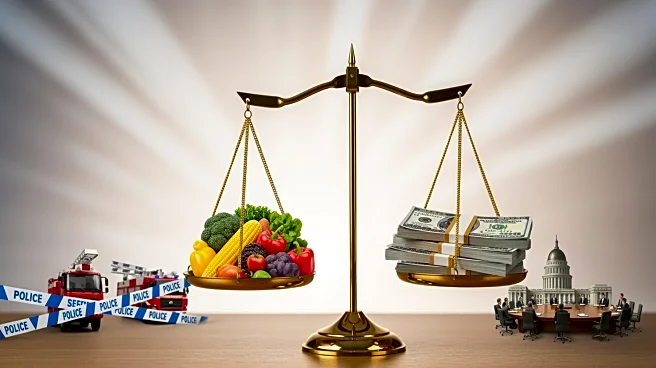What's Happening?
President Trump has claimed that the cost of Thanksgiving dinner will be 25% less this year, citing a prepackaged meal basket from Walmart. However, this claim is misleading as the basket offers fewer
items and different products, making it more affordable but not directly comparable to last year's offerings. Grocery prices are 2.7% higher than in 2024, and while Walmart's basket costs less, it includes fewer items and substitutes products, such as dinner rolls instead of sweet Hawaiian rolls. Economists have noted that wholesale turkey prices are up 75% since October 2024, and retail prices are 25% higher than a year ago, contradicting the notion of reduced costs.
Why It's Important?
The misleading claims about Thanksgiving dinner costs highlight the complexities of economic indicators and consumer pricing strategies. While retailers like Walmart offer deals to attract customers, the broader economic context shows rising grocery prices, impacting consumers' cost of living. The discrepancy between claimed savings and actual price increases underscores the importance of scrutinizing economic claims and understanding the factors influencing consumer prices. This situation affects consumers who may face higher costs despite promotional deals, emphasizing the need for accurate information in economic discussions.
What's Next?
As Thanksgiving approaches, consumers may need to navigate varying price points and promotional strategies from retailers. The focus on affordability may lead to increased scrutiny of economic claims and consumer pricing strategies. Retailers may continue to offer deals to attract customers, but consumers should be aware of the differences in product offerings and price fluctuations. The broader economic context, including rising grocery prices, will likely continue to impact consumer spending and cost-of-living pressures.
Beyond the Headlines
The situation reflects broader economic challenges, including inflation and consumer pricing strategies. The focus on Thanksgiving costs highlights the intersection of economic indicators and consumer behavior, with implications for public perception and policy discussions. The misleading claims underscore the importance of transparency and accuracy in economic communications, particularly in the context of rising living costs.












